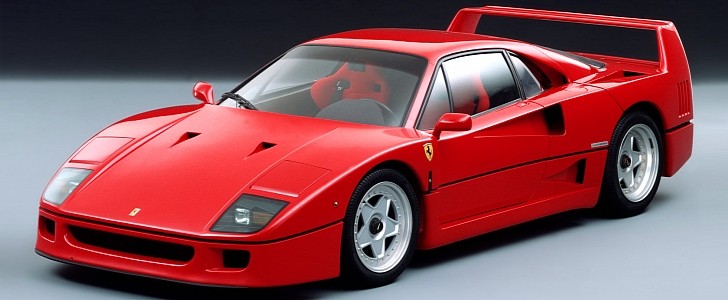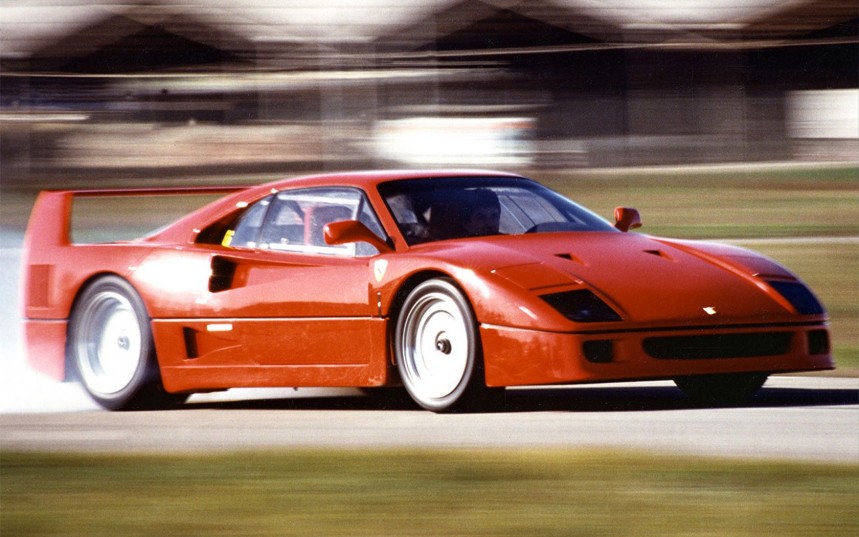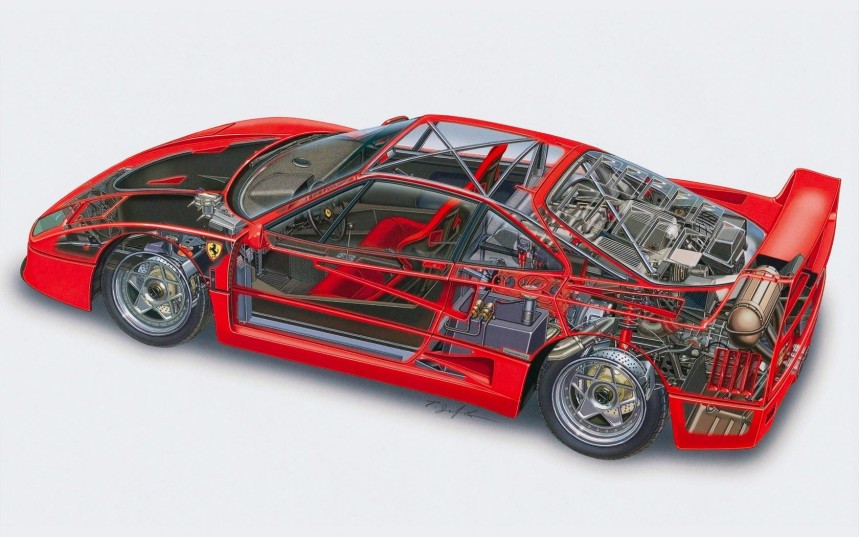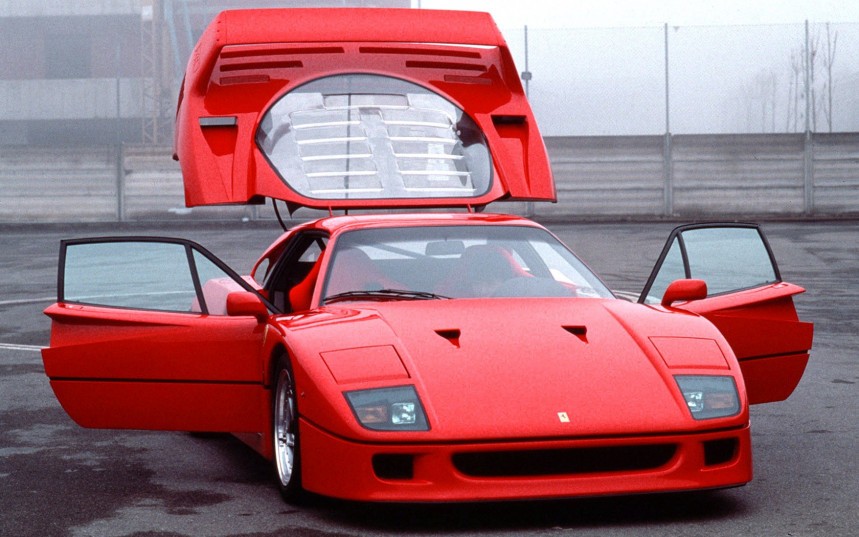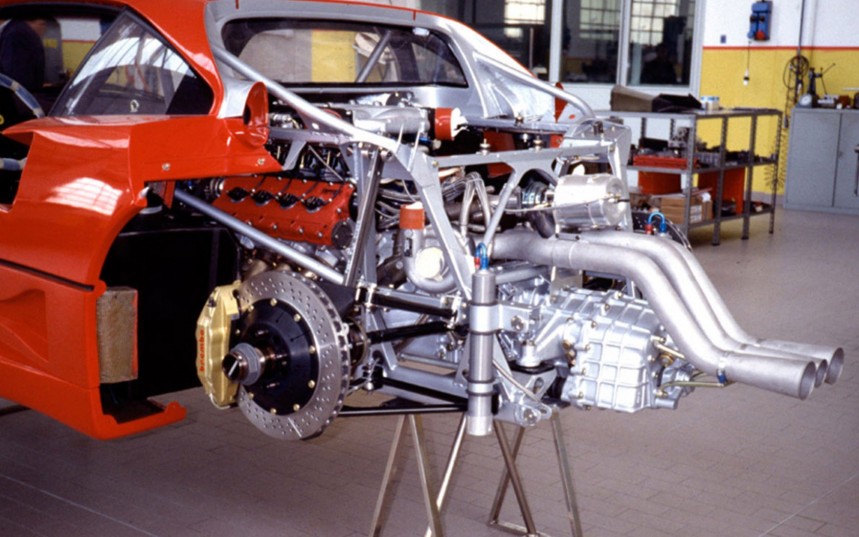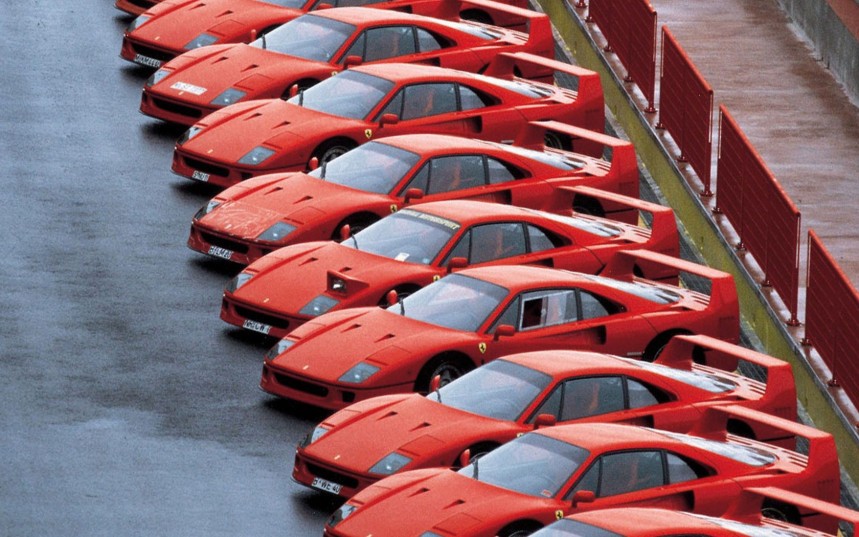It’s hard to disagree with those who the F40 is the greatest car ever made. The last car signed off by Enzo Ferrari himself is a timeless piece that reminds everyone of an era when supercars were simple, fast, and extremely dangerous. To this day, the wildest of the prancing horses can take someone out of their comfort zone quickly and brutally, yet those who are able to tame it are rewarded with the drive of their lifetimes.
It all started in the mid- ‘80s when chief engineer Nicola Materazzi and his team were trying to convince ownership that the 288 GTO was too good and needed to race in order to reach its full potential. Materazzi suggested they develop a Group B race version that could challenge the Porsche 959 in FIA-sanctioned events.
After barely obtaining permission, they worked voluntarily outside of the normal working hours, building five 288 GTO Evoluzione prototypes. Unfortunately, later that year, the FIA canceled the Group B category, so the cars never got to race. However, the model served as the base for what would become on of the most most iconic Ferrari road car of all time.
Legend has it that when Ferrari decided to sell four of the Evoluzione prototypes to private buyers, it received many offers that were far more appealing than the company would have hoped for.
The Scuderia decided to take advantage of the great demand by keeping the Evoluzione program alive and shifting the development team’s focus on improving the race car and making it road legal.
The project officially kick started on the 10th of June 1986 with Enzo Ferrari demanding that the car be completed in eleven months to mark the 40th anniversary of the 125 S, the first mass-produced Ferrari.
The chassis was heavily based on the 288 GTO using the same tubular steel frame construction. It had an identical wheelbase but was lengthened and reinforced in several key points.
For the suspension, engineers kept the GTO’s double-wishbone layout but enhanced most of the parts and drastically modified the settings. It had a ground clearance of only 125 mm (4.9 inches), which led Ferrari to add an optional height-adjustable suspension during its production period.
It was equipped with five-spoke wheels that were specifically manufactured for Ferrari by Speedline. They were attached to the Rouge hubs using a single nut setup. The rubber was provided by Pirelli, which applied its Formula One experience to design a set of asymmetrical tread pattern P-Zeros for the F40.
The body was a dramatically new design conceived by Pininfarina’s Leonardo Fioravanti and Pietro Camardella. They used mainly composite materials like aluminum alloy, carbon fiber, and Kevlar for the eleven body panels to minimize weight and increase rigidity.
It featured large single unit front and rear sections, and weight was further reduced by using polycarbonate plastic to manufacture the windshield and windows. The huge removable rear section incorporated a panoramic polycarbonate screen under which the glorious twin-turbocharged V8 stood.
Like its Evoluzione predecessor, the 2.9-liter (2,936 cc; 179.2 cu in) engine featured a dry-sump lubrication system, twin overhead camshafts, and two IHI intercooled turbochargers that lead to an output of 478 PS (471 hp; 352 kW) at 7,000 rpm and no less than 577 Nm (426 lb-ft) of torque at 4,000 rpm.
This led to mind-blowing performance for a 1980’s road car. The F40 could accelerate from 0 to 100 kph (62 mph) in 4.7 seconds and reach a top speed of 321 kph (199 mph).
The interior of the F40 was minimal, to say the least. It featured two red cloth-covered racing seats, roof lining, a covered dashboard, a steering wheel, and the iconic chrome shifter. The only piece of advanced equipment was a conventional air conditioning system. The car had no stereo, glove box, or door panels.
The Ferrari F40 was unveiled in July 1987, thirteen months after development started. Although it was initially scheduled for the Frankfurt Motor Show, parent company FIAT's management canceled the reveal among fears that it would eclipse Alfa Romeo 164’s launch event.
Instead, it was presented to the public at the Civic Center in Maranello. It was the last such event for Enzo Ferrari, who would sadly pass away just a few months later.
The F40 was one of the most heavily promoted cars of the era, which resulted in its massive popularity. Ferrari initially set the goal of producing 400 units, but the demand exceeded even the most optimistic predictions. They would go on and build 1,315 units from 1987 to 1992, which could be had in any color as long as it was red. All of them were left-hand drive and 213 F40s were purposely built for the United States.
Regarded by many as the greatest road-going Ferrari of all time, it would become a commodity for speculators and collectors. Intended to offer the ultimate driving experience, only 10% of them were ever periodically driven.
Current hypercars are close to perfection offering everything from record breaking speed, all-wheel steering, and all the latest technological advancements conceivable.
But we will probably never see another car like the F40. The imperfections, simplicity, and visceral character is what make it so unique. It’s built with one purpose in mind: delivering the ultimate driving experience in a mix of unlimited joy and sheer terror that just can’t be replicated.
After barely obtaining permission, they worked voluntarily outside of the normal working hours, building five 288 GTO Evoluzione prototypes. Unfortunately, later that year, the FIA canceled the Group B category, so the cars never got to race. However, the model served as the base for what would become on of the most most iconic Ferrari road car of all time.
Legend has it that when Ferrari decided to sell four of the Evoluzione prototypes to private buyers, it received many offers that were far more appealing than the company would have hoped for.
The project officially kick started on the 10th of June 1986 with Enzo Ferrari demanding that the car be completed in eleven months to mark the 40th anniversary of the 125 S, the first mass-produced Ferrari.
The chassis was heavily based on the 288 GTO using the same tubular steel frame construction. It had an identical wheelbase but was lengthened and reinforced in several key points.
It was equipped with five-spoke wheels that were specifically manufactured for Ferrari by Speedline. They were attached to the Rouge hubs using a single nut setup. The rubber was provided by Pirelli, which applied its Formula One experience to design a set of asymmetrical tread pattern P-Zeros for the F40.
The body was a dramatically new design conceived by Pininfarina’s Leonardo Fioravanti and Pietro Camardella. They used mainly composite materials like aluminum alloy, carbon fiber, and Kevlar for the eleven body panels to minimize weight and increase rigidity.
Like its Evoluzione predecessor, the 2.9-liter (2,936 cc; 179.2 cu in) engine featured a dry-sump lubrication system, twin overhead camshafts, and two IHI intercooled turbochargers that lead to an output of 478 PS (471 hp; 352 kW) at 7,000 rpm and no less than 577 Nm (426 lb-ft) of torque at 4,000 rpm.
The interior of the F40 was minimal, to say the least. It featured two red cloth-covered racing seats, roof lining, a covered dashboard, a steering wheel, and the iconic chrome shifter. The only piece of advanced equipment was a conventional air conditioning system. The car had no stereo, glove box, or door panels.
The Ferrari F40 was unveiled in July 1987, thirteen months after development started. Although it was initially scheduled for the Frankfurt Motor Show, parent company FIAT's management canceled the reveal among fears that it would eclipse Alfa Romeo 164’s launch event.
Instead, it was presented to the public at the Civic Center in Maranello. It was the last such event for Enzo Ferrari, who would sadly pass away just a few months later.
The F40 was one of the most heavily promoted cars of the era, which resulted in its massive popularity. Ferrari initially set the goal of producing 400 units, but the demand exceeded even the most optimistic predictions. They would go on and build 1,315 units from 1987 to 1992, which could be had in any color as long as it was red. All of them were left-hand drive and 213 F40s were purposely built for the United States.
Current hypercars are close to perfection offering everything from record breaking speed, all-wheel steering, and all the latest technological advancements conceivable.
But we will probably never see another car like the F40. The imperfections, simplicity, and visceral character is what make it so unique. It’s built with one purpose in mind: delivering the ultimate driving experience in a mix of unlimited joy and sheer terror that just can’t be replicated.
